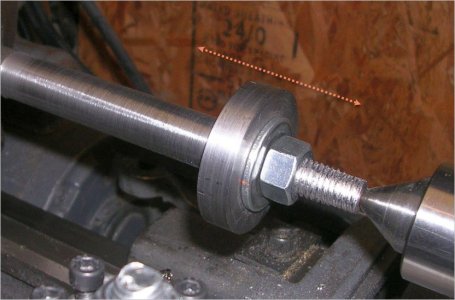“What PA are your headstock drive gears? We pulled the idler gear from
@RobinHood's SM and it meshed perfectly with my shaper gear. Rudy is pretty sure it's 14.5.”
So I found the answer from my SM 1340 manual provided by SM to me based on my lathe’s serial number: all the gears in the drive train to the Norton QCGB have a PA of 14.5*.
It is a bit faint, but inside the 45T gear are it’s specs: “45T, 16DP, 14.5* PA”.
Here is the method we used to determine the specifications of the 14T Craig has on his shaper.
The DP is 16, no question at all. It was calculated based on the OD and the number of teeth N. It was also confirmed with a Fowler Gear Pitch gage (made in Japan) and by meshing it with the 60T gear from my SM1340 (the 60T was easiest to remove from the stack, otherwise we would have used the 45T one).
Now the PA. We tried using the method as suggested by
@Mcgyver. Unfortunately, the gear tooth angle is too large to measure across 4 teeth. The measuring instrument touches the gear tooth top edges and not the flanks. So that method was out. I don’t have a comparator. So we used the 60T gear off the lathe and compared how deep the teeth meshed between the 14T, the 60T and the factory 24T on the lathe itself. The depth was identical. Plus the little 14T gear rolls around the 60T gear beautifully.
Based on the above physical experiment, we concluded that the PA is 14.5* with a very high probability.
We are collaborating on making a 28T gear that Craig needs.
He will most likely document that for us.


